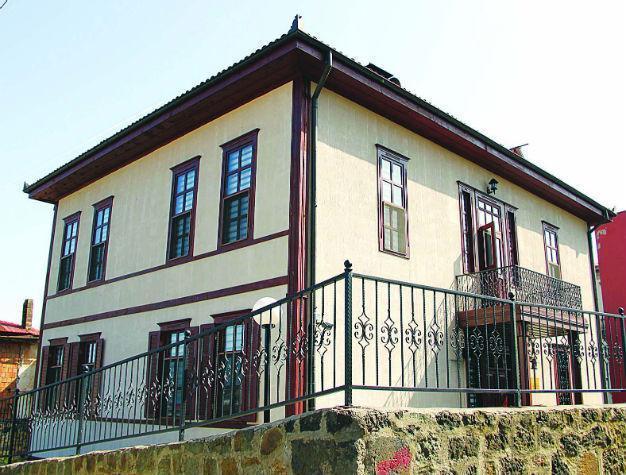Renaissance traces adorn Giresun houses
GİRESUN – Anadolu Agency

AA photo
Giresun might be a long way from Florence, but the traces of the Renaissance are prominent in one neighborhood of the Turkish Black Sea city.Windows of some houses in Giresun’s Zeytinlik neighborhood were designed with the art of the golden ratio as in the window behind Jesus in the “Last Supper” painting by Leonardo Da Vinci.
“Architects who built these houses in Giresun knew about the golden ratio. Let’s call it ‘architecture without an architect.’ In Da Vinci’s painting ‘The Last Supper,’ the window behind Jesus was made with the golden ratio. So, our examinations and measurements have shown that all of the windows in Zeytinlik houses were made in accordance to the golden ratio,” said Celal Bayar University History of Art Department academic Gazanfer İltar.
The houses were built in the 19th century using tools brought from Marseilles by hazelnut traders, the academic said.
When the cultivation of hazelnuts expanded in the city in the 19th century, it facilitated greater trade with Europe, İltar said. “This group, which generally included Greek people, engaged in the hazelnut trade from Giresun to Europe throughout the 19th century. As a result of this trade, the number of rich people grew in the city. These traders established a settlement for themselves in this region known as the Zeytinlik district.”
Trade between Giresun and Marseilles
İltar said the vessels that carried hazelnuts from Giresun to Marseilles returned with construction materials. “The houses of the Zeytinlik district were built with these materials brought from Europe.”
Among the materials were Marseilles-type roof tiles, floor tiles, furniture, decorations and construction tools, which were soon used in all the houses of the area, said İltar.
“This area was designed in the 19th century. There is a house and a garden in a line. No house here obstructs the air circulation and view of another house. Each house has a garden, fountain, well and a backhouse,” he added.
All the houses have been registered by the Trabzon Cultural and Natural Preservation Board, said İltar, adding that most of the houses there would be restored to their original in a future as part of a city design project.
Officials recently made a book on the Zeytinlik district and the other Giresun houses, İltar said.
“We have look at the typology of the houses in the city. Explaining houses is not enough in civil architecture work. How are these houses different from others in the region? What is the place of the Giresun houses in the literature of traditional house architecture? We explained it. The eastern Black Sea Development Agency supported this work, too. We have the results of 10 years of work,” the scholar said.
Giresun tourism director Tamer Uzuner said the district was home to nearly 100 houses. “When compared to Safranbolu or historic Mardin houses, Zeytinlik is in the city center and can be reached more easily.”
Uzuner said 200 tour buses were now planning trips to Zeytinlik. “We hope this year that 10,000 tourists will visit Zeytinlik as a start.”
















